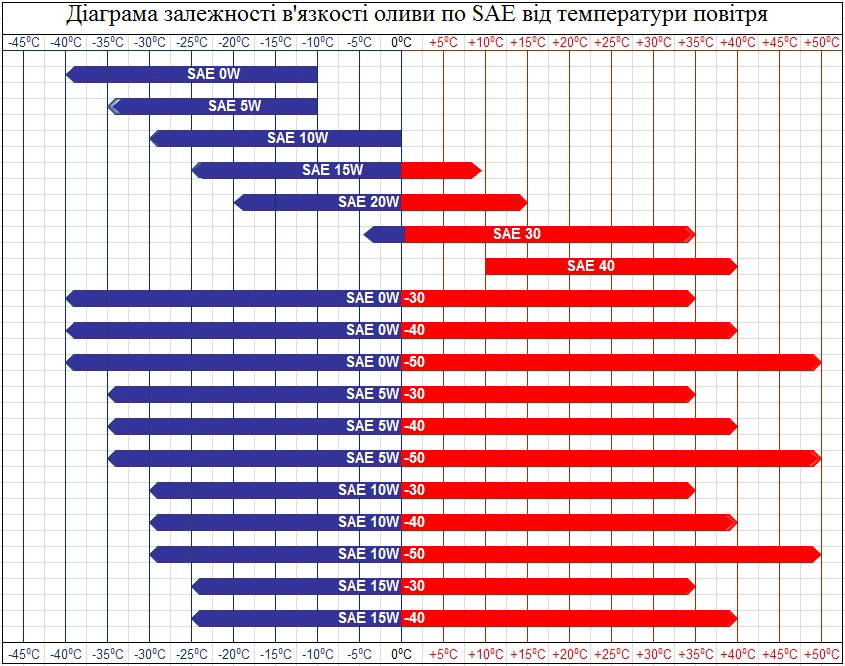The viscosity of engine oil is currently determined by the SAE specification. The Society of Automotive Engineers, which means this abbreviation,
has developed an international classification, which has become a common
standard in most countries of the world.
The marking of motor oils by SAE regulates their viscosity. All world manufacturers of motor oils indicate in their products the designation in accordance with this classification. Let's try to figure it out.
Classification of motor oils by SAE
Most car owners distinguish between winter, all-season and summer motor oil. SAE
provides an understanding of their features in their specification,
where each grade of viscosity has particular significance. The classification of motor oils contains 5 summer and 6 winter classes of oils. The letter "W" in the designation means "use during the winter".
With the increase in the viscosity of the oil, the number that describes its class increases.
Specification of SAE motor oils characterizes only their viscosity-temperature properties, divided by season of use.
Classification of motor oils by SAE provides for all-season types of designation of the winter and summer viscosity parameters. As, for example, in 5W-30: the viscosity parameter for the cold season
is reflected to the left with the index "W", and for the demo-loop
cycle - in the right only figures.
The viscosity of SAE winter grades of motor oil is defined from 0W to 25W in 5 steps increments. Summer classes with the same step are characterized by parameters 20-60.
Requirements of the SAE Specification to Motor Oils
Characteristics of motor oils for SAE is determined by four main indicators:
1. Viscosity in the operating mode of ICE.
2. Kinematic viscosity.
3. Starting properties.
4. Propellation.
The first indicator indicates the actual viscosity of the oil on the heated engine. He characterizes the ability of oil to resist:
1. wear of the piston group;
2. losses in the interaction of pairs;
3. temperature fluctuations when heating internal combustion engines when changing modes.
Taken together, the viscosity of motor oil determines the fuel consumption of ICE of any type. Other parameters will be more interesting to engineers than car owners.
When choosing the grade of viscosity of engine oil, refer to the manufacturer's recommendations. If your transport is used and there is no service book, then use simple selection rules:
1. When choosing winter oil, estimate the average winter temperatures in the area where you live. Select the viscosity class on the table based on these values to ensure easy startup.
2. Try to use all-season variants of oils with indices from 0W30 to 10W-40 in a mild, moderately continental climate. The viscosity of the engine oil of this class will be optimal when not hot summer and warm winter. Such a choice will allow you to quickly and easily start the
engine both in the cold and after long breaks in operation during the
spring-autumn cycle.
The
use of seasonal varieties is justified only in a sharply continental
climate and significantly increases the cost of changing the oil needed
at least twice a year.
Characteristics of motor oils by SAE
20.02.2018




